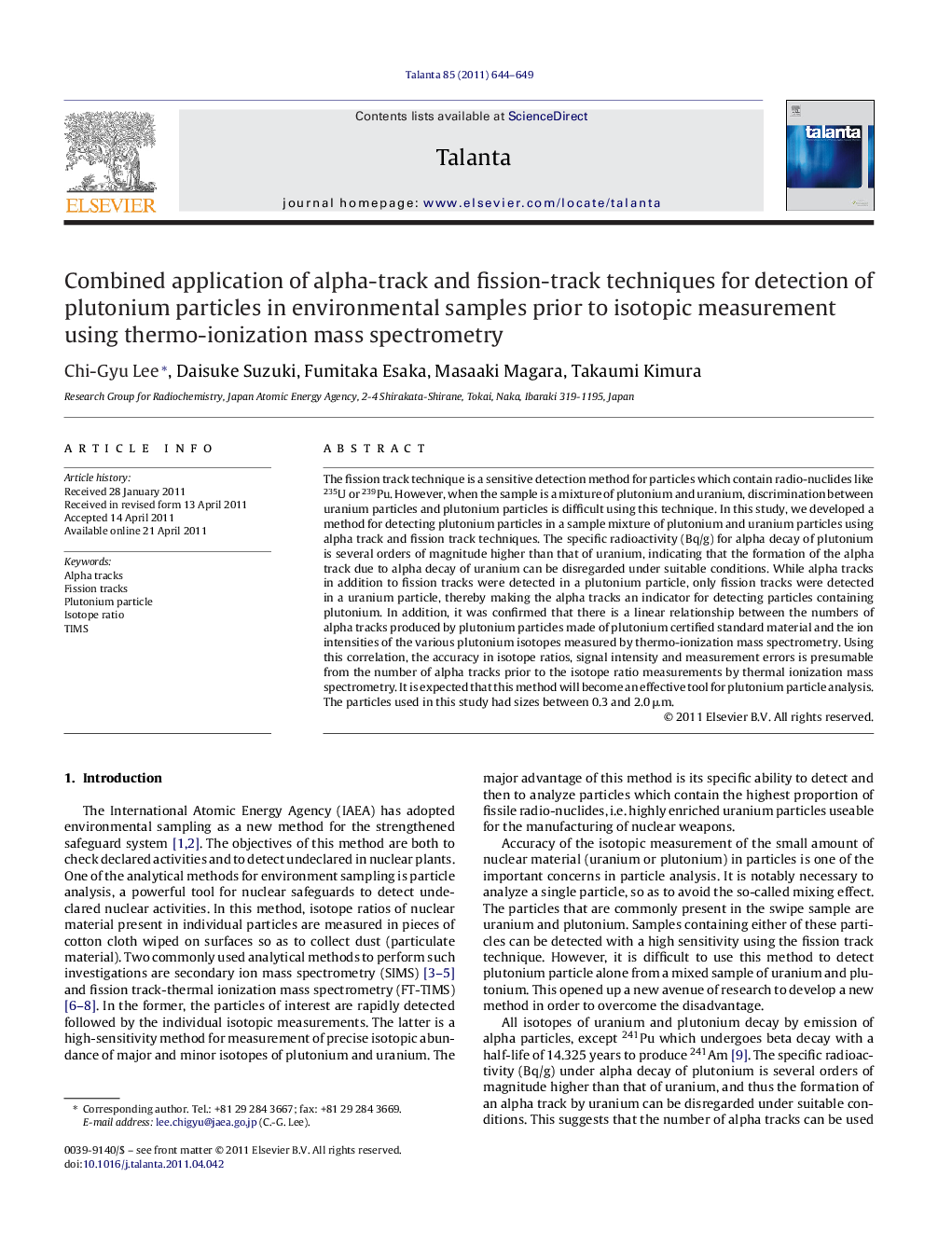| Article ID | Journal | Published Year | Pages | File Type |
|---|---|---|---|---|
| 10559850 | Talanta | 2011 | 6 Pages |
Abstract
The fission track technique is a sensitive detection method for particles which contain radio-nuclides like 235U or 239Pu. However, when the sample is a mixture of plutonium and uranium, discrimination between uranium particles and plutonium particles is difficult using this technique. In this study, we developed a method for detecting plutonium particles in a sample mixture of plutonium and uranium particles using alpha track and fission track techniques. The specific radioactivity (Bq/g) for alpha decay of plutonium is several orders of magnitude higher than that of uranium, indicating that the formation of the alpha track due to alpha decay of uranium can be disregarded under suitable conditions. While alpha tracks in addition to fission tracks were detected in a plutonium particle, only fission tracks were detected in a uranium particle, thereby making the alpha tracks an indicator for detecting particles containing plutonium. In addition, it was confirmed that there is a linear relationship between the numbers of alpha tracks produced by plutonium particles made of plutonium certified standard material and the ion intensities of the various plutonium isotopes measured by thermo-ionization mass spectrometry. Using this correlation, the accuracy in isotope ratios, signal intensity and measurement errors is presumable from the number of alpha tracks prior to the isotope ratio measurements by thermal ionization mass spectrometry. It is expected that this method will become an effective tool for plutonium particle analysis. The particles used in this study had sizes between 0.3 and 2.0 μm.
Related Topics
Physical Sciences and Engineering
Chemistry
Analytical Chemistry
Authors
Chi-Gyu Lee, Daisuke Suzuki, Fumitaka Esaka, Masaaki Magara, Takaumi Kimura,
